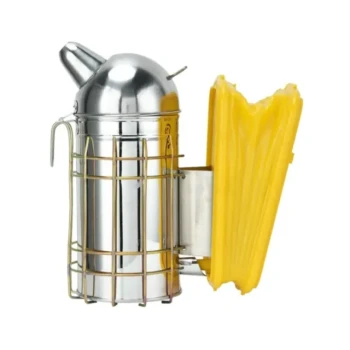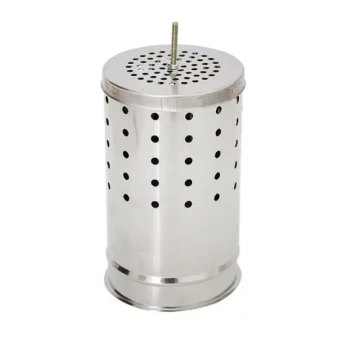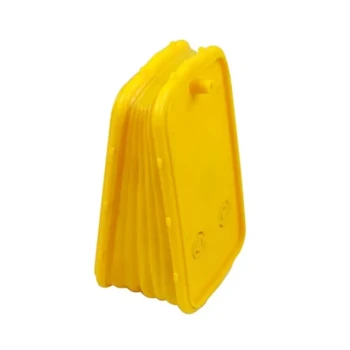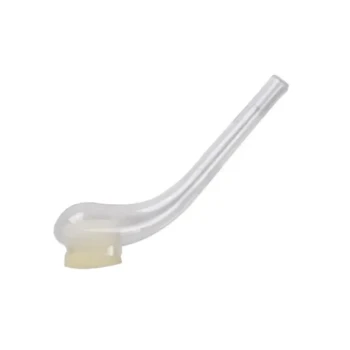Using a smoker calms honey bees through a two-part reaction. Smoke masks the chemical alarm signals they use to coordinate a defensive attack, while simultaneously triggering a feeding instinct that distracts them and makes them physically less inclined to sting. This dual effect redirects the colony's focus from defense to self-preservation, allowing for a safer and less stressful hive inspection.
Smoke does not magically "calm" bees in a sedative sense. Instead, it hijacks their communication and survival instincts, redirecting their focus from defending the hive to preparing for a potential evacuation with a full stomach of honey.
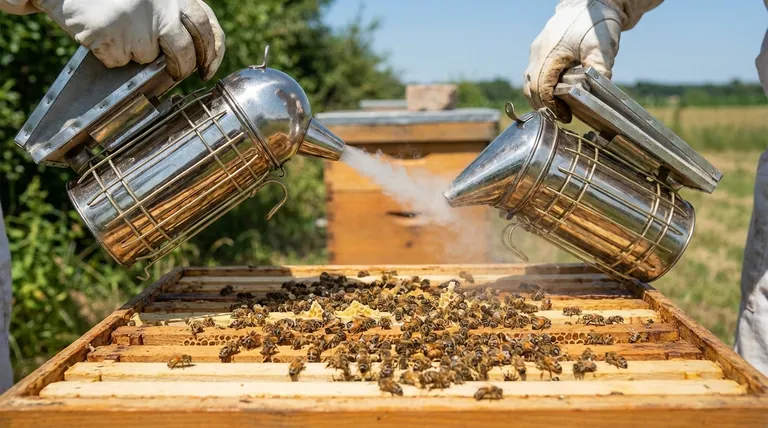
The Two Primary Mechanisms of Smoke
To use a smoker effectively, it is critical to understand the two distinct behavioral and physiological responses it triggers within the colony.
Masking the Alarm System (Pheromones)
When a hive is disturbed, guard bees release alarm pheromones. These chemical signals are an urgent call to arms, instantly alerting other bees to a threat and recruiting them into a coordinated defensive attack.
Smoke effectively overwhelms the bees' sensitive antennae, which they use to "smell" these pheromones. This sensory overload masks the alarm signals, preventing them from spreading throughout the colony. A small disturbance therefore remains localized and does not escalate into a full-blown defensive response from thousands of bees.
Triggering an Ancient Survival Instinct (Feeding)
The presence of smoke simulates a nearby forest fire, a catastrophic threat to a honey bee colony. This triggers a powerful, instinctual survival response: prepare to evacuate.
Faced with the potential loss of their home, many worker bees will go to the nearest open honey cells and begin to gorge, filling their honey stomachs. Their priority shifts from guarding the hive to taking as much of the colony's food resources with them as possible.
This feeding response has a secondary benefit. A bee with a full abdomen of honey is physically less agile. It becomes more difficult for her to flex her abdomen into the "C" shape required to aim and deploy her stinger, making her less likely to sting.
Understanding the Trade-offs and Best Practices
Using smoke correctly is a skill. Misapplication can be ineffective or even counterproductive, stressing the colony instead of calming it.
Cool, White Smoke is Key
The objective is to produce gentle, cool, white smoke. Hot smoke or thick, black smoke from poor fuel or technique is not a calming signal. It is an actual threat that can injure the bees, trigger panic, and make the colony more agitated and unpredictable.
Too Much Smoke is Counterproductive
More is not better. Over-smoking a hive can drive bees away from the frames, making inspection impossible. It can cause the queen to run and hide, and it can agitate the colony far more than using no smoke at all. A few gentle puffs at the entrance and under the lid is the correct starting point.
Smoke is a Tool, Not a Cure-All
Smoke makes a colony more manageable, but it does not fundamentally change its genetic temperament. A highly defensive hive will still be defensive, just less coordinated. Always pair the use of smoke with slow, deliberate movements to avoid alarming the bees unnecessarily.
How to Apply This to Your Hive Inspection
Understanding these principles allows you to use smoke with intention, tailoring your approach to the specific task at hand.
- If your primary focus is a quick hive check or feeding: A few puffs at the entrance and one or two under the lid are likely sufficient to disrupt the initial guard response.
- If your primary focus is a deep, frame-by-frame inspection: Apply smoke at the entrance, wait 30-60 seconds, then apply a little more under the lid before methodically working through the hive, using small puffs as needed to gently move bees down off the frame tops.
- If your primary focus is managing a known aggressive hive: Be patient and give the smoke more time to take effect before you open the hive fully, and be prepared to reapply it gently to keep alarm pheromones suppressed throughout the inspection.
By using smoke to manage bee instincts, not just as a magic wand, you become a more confident and effective beekeeper.
Summary Table:
| Mechanism | Effect on Bees | Benefit for Beekeeper |
|---|---|---|
| Masks Alarm Pheromones | Prevents coordinated defensive response | Reduces risk of stings |
| Triggers Feeding Instinct | Bees gorge on honey, become less agile | Makes bees less likely to sting |
| Simulates Forest Fire | Triggers evacuation preparation | Redirects focus from defense |
Ensure your next hive inspection is safe and stress-free with professional-grade equipment from HONESTBEE.
We supply commercial apiaries and beekeeping equipment distributors with the durable, reliable smokers and hive tools needed to work confidently with any colony. Our wholesale-focused operations ensure you get the best value on essential gear.
Contact HONESTBEE today to discuss your equipment needs and keep your bees calm and productive.
Visual Guide

Related Products
- European Stainless Steel Bee Smoker for Honey Bee Hive
- Economy Galvanized Beekeeping Honey Bee Smoker for Wholesale
- Professional Bee Smoker with Elongated Spout and Durable Bellows for Beekeeping
- 54-Piece Smoker Fuel Pellets for Beekeeping Beehive Smoker Fuel
- Premium Traditional Copper Bee Smoker with Bellows
People Also Ask
- What are the key benefits of using a bee smoker? Master Hive Inspections Safely and Efficiently
- What are the benefits of cleaning a bee smoker? Ensure Hive Safety and Bee Health
- What are the features of a recommended bee smoker? A Guide to Safety, Durability & Performance
- How does a smoker help during hive inspections? The Key to Calm, Safe Beekeeping
- Can you use too much smoke on bees? The Right Way to Use a Bee Smoker for Calm Inspections





